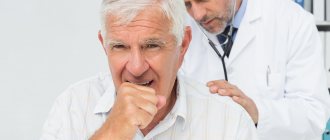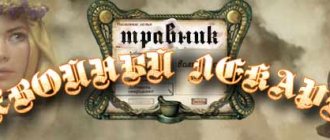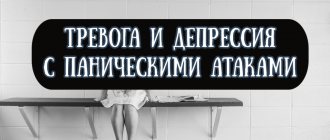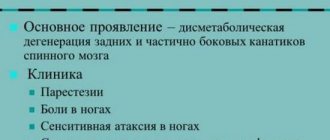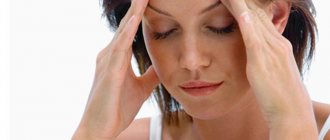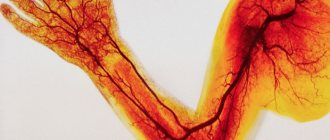Why does tachycardia occur for no reason?
“I haven’t slept well for many nights.
The heart is pounding, as if wound up. Although there is no good reason to be nervous, I cannot sleep. I feel panicked, feeling like my heart might stop. The family had to call an ambulance. When the doctor came into the room and examined me, he said everything was fine. Pulse is normal. The pressure is also fine. But he couldn’t explain why his heart was pounding so much.” What diagnosis would you make?
Currently, you can often find the diagnosis “tachycardia with vegetative-vascular dystonia” in the patient’s medical documents. Women are especially susceptible to this disease. This can be explained by a more acute reaction of women to emotional stress, which leads to changes in the endocrine profile. Women's lives are always full of events.
Cardiodynia is the most common problem associated with hyperhidrosis. If you feel a sharp pain in the chest, which has nothing to do with actual overload, this is the result of a disorder of the sympathetic part of the nervous system. Osteopathy is prescribed as a treatment in such cases, helping to cope with the disorder.
With prolonged internal tension and stress, bodily manifestations arise in the form of tachycardia, depression, neurosis, and fears. THIS is VSD. Tachycardia with VSD is an unconscious excitement during neurosis, provided that doctors do not find heart pathologies
Tachycardia after sleep is also the most common sign of a parasympathetic nervous system disorder.
If a patient has osteochondrosis, the disease usually manifests itself as VSD and arrhythmia, which can be easily confused with myocarditis.
Bradycardia occurs when the heart rate drops to 40-60 beats per second, and the person is in a subconscious state. Other signs include sudden mood swings and extremely cold hands and feet.
Sweating of the hands and feet is possible with bradycardia. But excessive sweating of the armpits for no reason (worries or physical work) already indicates the presence of dystonia.
A slightly elevated temperature - 37.1 - 37.5, rising in the evenings, is an alarm bell. The best way out in this case is a full medical examination. Your goal is to rule out a more dangerous disease.
The following warning signs are reasons to make an appointment with a neurologist or psychotherapist:
- Inexplicable outbursts and paranoia;
- Dizziness and headaches;
- Sudden mood swings and drowsiness;
- Excessive sweating and weakness;
- Shortness of breath and a feeling of heaviness in the chest, a seeming lack of air;
- Suspicion and anxiety;
- Buzzing and ringing in the ears;
- Inexplicable panic
Hidden signs and acute states of chronic diseases make diagnosis difficult. Unfortunately, doctors do not have all the necessary measures to fully determine vegetative-vascular dystonia. To do this, the patient must undergo a thorough examination by the following specialists:
- Neurologist;
- Ophthalmologist;
- Psychotherapist;
- Otolaryngologist;
- Endocrinologist.
It is almost impossible to completely get rid of vegetative-vascular dystonia. However, the patient can and should take steps to reduce his symptoms. Atrial fibrillation often returns as a result of each intense nervous breakdown. Effective therapy in this case includes psychotherapy and antidepressants.
Anaprilin for tachycardia is recommended only in cases where the pulse exceeds the dangerous mark - from 90 beats per minute, and the pressure is significantly “off scale”. Anaprilin reduces heart rate, but is also addictive. Therefore, such drugs should not be overused. It is better to take a validol tablet or drink 15 drops of Corvalol. These drugs will relieve shortness of breath, blood pressure and lower the pulse.
Folk remedies and herbs cope well with sympathoadrenal crisis. For example, you can brew dill seeds and drink them at night. Decoctions of chamomile, mint and lemon balm, hawthorn reduce blood pressure and soothe.
Experienced specialists can help patients cope with problems and teach them how to manage temporary setbacks that are easy to overcome!
A healthy lifestyle, good sleep, healthy eating habits and exercise can help prevent the negative consequences of extrasystoles in VSD, even with a hereditary background.
Increased heart rate occurs for various reasons with tachycardia at the time of VSD. But the process of accelerating heart contractions occurs under the influence of catecholamines. These are physiologically active substances that transmit nerve impulses from cell to cell in the human sympathoadrenal system.
The sympathetic nervous system is part of the entire human autonomic nervous system. It performs the function of platooning all organs dependent on it, while the parasympathetic system is called upon to return everything to a state of rest. This explains attacks of rapid heartbeat in people with vegetative-vascular dystonia. Disturbances in the activity of the autonomic nervous system lead to unpredictable jumps in heart rate for no apparent reason, to tachycardia with VSD
Neuroses are psychogenic diseases that require long-term treatment. We are talking about disorders of nervous activity, manifested in disorders such as fear, anxiety, depression, and mood swings. As a rule, it develops in patients who have little control over their behavior, but there are other reasons.
Tachycardia with neurosis occurs if:
- Vegetative dystonia.
- Hypertension.
- Hormonal changes in the body.
The impetus for cardialgia of nervous disorders can also be:
- bad ecology.
- bad habits.
- chronic infections.
Doctors say that the main cause of tachycardia against the background of neurosis is frequent stress, which undermines the human psyche for a long time.
Nervous tachycardia does not always develop in people who have problems controlling their own behavior. The disease may appear due to the following reasons:
- during hormonal changes in the body associated with sexual dysfunction, depression or neurosis;
- arterial hypertension;
- dystonia of neurocirculatory type;
- chronic infections;
- congenital features of the nervous system;
- negative impacts of environmental factors and certain types of food.
But the main reason for the formation of this disease is considered to be situations that are traumatic to the psyche, which can be repeated for a long time.
Is frequent tachycardia dangerous during VSD or neurosis?
Focusing on the heart is a popular habit among VSDers. After all, it is this organ that first reacts to a panic attack with rapid knocking. Not a single PA is complete without tachycardia. Often, dystonics experience various pains in the area of this organ, which increases their fears, worries, anxieties and hypochondria.
But is tachycardia with VSD really dangerous? And is it worth panicking at the slightest deviation in heart rate? He will try to understand the issues that are pressing for neurosics.
Cardiac tricks of VSD
The symptoms of vegetative-vascular dystonia are very diverse. But it is hardly possible to find a VSD person who would not be bothered by tachycardia. Palpitations are literally the “king” of symptoms and occur quite often.
The following can increase the pulse of a person suffering from neurosis and dystonia:
- Changing body positions. I sat quietly, sat, suddenly stood up - and on you, your pulse jumped over a hundred.
- Physical activity. Even while cleaning the house, the VSDeshnik can feel how much he is pounding in his chest. Not to mention hard work, such as loading heavy things, digging beds in the garden.
- Feelings and emotional experiences. And not only negative ones. A neurotic person can also bring himself to tachycardia from positive emotions.
- Change of weather. About 70% of dystonics suffer from weather dependence.
- Food. The fact that after eating, especially hot food, your heart beats faster is completely normal. But not for the VSDeshnik. Noticing an accelerated pulse after lunch, he easily provokes a panic attack.
- Bad habits. Sometimes the desire to drink or smoke overcomes the fear of unpleasant symptoms. But it doesn’t get rid of them at all. Heart rhythm disturbances are often observed after trying to relax with alcohol or a cigarette.
- Medicines. Taking some medications can actually affect your heart rate. But the neurotic is also influenced by everything he reads in contraindications and side effects.
In fact, all of these factors increase the pulse of any healthy person. But especially for the VSDeshnik, since his attention is always focused on his well-being.
In most cases, tachycardia during neurosis is not accompanied by any organic cardiac pathologies. But still, a person must undergo an examination and make sure that he does not have actual diseases of the organ.
It is not uncommon when, after examining and listening to complaints, the cardiologist refers the patient to a psychotherapist or neurologist. This confuses many people. How so? Your heart hurts, it’s pounding like crazy, but you’re being referred to a “shrink”?
But in fact, the doctor is right in such cases. Since the causes of increased heart rate during VSD are in the head and weakened nervous system. In the field of psychotherapy there is even such a diagnosis - cardioneurosis. And it is not treated with heart medications at all.
Is tachycardia dangerous with VSD?
The rhythm of our main organ is irregular. In different situations, our body requires different amounts of oxygen and blood supply.
In a certain area of the heart muscle there is a special reflexogenic area, which responds to any excitation of the body by increasing heart contractions. And no matter how unpleasant it may be for the VSD worker, the heart should sometimes beat faster than the average pulse. This is how our body is designed and laid down by nature itself.
In some situations, the heart muscle begins to pump blood intensively to warm the body. In others, to supply oxygen to the brain. In others, to quickly deliver the necessary nutrients to each organ in critical situations.
Therefore, a rapid pulse is not a reason to call an ambulance every time or prepare to depart to another world. And certainly not a reason to inflate another panic attack.
To understand whether tachycardia is dangerous during VSD, you need to know basic anatomy. The heart is a muscle. What happens to muscles when they are not trained? That's right, they weaken and may even atrophy.
What do dystonics do in most cases? They try in every possible way to suppress a slightly elevated pulse and immobilize themselves, just so as not to feel the increased heartbeat. After all, it scares the hell out of me. The VSDeshnik is afraid to run, afraid to dance, jump, work for a long time, stand up abruptly and much more, because this speeds up the pulse.
And this is a serious mistake.
A resting heart is a weak heart!
Many people with vegetative-vascular dystonia do not realize that by constantly protecting their “engine” from stress, they are only making things worse for themselves. The less a person moves and the more he drinks various sedatives, the weaker his heart becomes.
Of course, this does not mean that right from tomorrow you need to take ketmen in your hands and plow 10 hectares of land. But regular activity is simply necessary for a VSD worker.
Any physical activity must begin with a minimum, gradually increasing it. And there is no need to worry that your heart will jump out of your chest. Working at an increased pace from time to time is the norm for him.
The longer and harder a person trains, the stronger his heart becomes. Today it can knock at a rate of 150 beats per minute from the rise to the 5th floor. But if you rise like this every day and more than once, in a month the pulse will no longer be 150, but 120. After 3 months - 100. This will mean that the organ has strengthened and become more resilient.
The main problem of VSDeshniks is not in the heart itself, even if it is rather weak, but in attention. Excessive control of your well-being and the habit of almost panicking.
How to cope with tachycardia on your own?
Increased heart rate caused by physical activity does not need regulation. It will go down on its own as soon as the person comes to a state of rest.
We will talk here about cases where an accelerated heartbeat during VSD is caused by worries, fears, phobias, negative thoughts and other “things” generated by the head.
If you notice signs of an oncoming panic attack and your heart is already racing, try following these tips:
- Drink a glass of cool water, this will thin the blood and make it easier for your heart to pump it.
- Try to provide yourself with fresh air.
- Take a comfortable position on an armchair, bed, chair and try to relax.
- No matter how difficult it is, switch your attention to a positive internal picture (pleasant memories, good thoughts, image). Even if you get pulled back into the negative, calmly turn your attention and concentrate on the positive.
- Breathe slowly and deeply, but without pauses. Inhalation and exhalation should be free. Smooth, deep, calm breathing helps you quickly calm down.
When your pulse calms down, continue with your normal activities and try not to dwell on what happened.
To train your heart, walk more often, do not use the elevator, dance, do gymnastics. Typically, for VSD, gentle training and calm sports, such as swimming, yoga, Pilates, and Zumba, are recommended.
Do not think under any circumstances that vegetative-vascular dystonia is a reason to turn into a sloth and limit yourself in everything.
On the contrary, the harder you try to lead the most ordinary and active lifestyle, the faster you will forget about your shattered nervous system and poor health.
Good health and prosperity to everyone!
, please select a piece of text and press Ctrl+Enter. Thank you for your attentiveness and help!
Diagnostic methods
In order to accurately establish the diagnosis and ensure the normal functioning of the heart, procedures are prescribed that make it possible to determine the nature of tachycardia, its causes, type, and formulate a possible prognosis.
Recommended Research:
- Electrocardiogram. Electrical impulses from the heart are measured.
- Daily monitoring. Recording heart function for one day.
- Event recorder. A device that records signals when the patient experiences characteristic symptoms. Helps examine rhythm disturbances at selected time intervals.
- Electrophysiological studies. A special catheter is inserted into the vein and advanced towards the heart, controlling the process. Having reached the goal, the device begins to stimulate contractions, and heart rate indicators are recorded.
- Table tilt test. Helps determine how the nervous and cardiovascular systems respond to changes in posture. The patient is injected with a drug that provokes arrhythmia, and then placed on a table that rhythmically changes position.
We suggest that you familiarize yourself with: Sinus tachycardia with a heart rate of 90 per minute.
To make a final diagnosis, an ultrasound of the heart is prescribed.

The diagnosis of “cardiac neurosis” is made if there are no physiological abnormalities (the cardiovascular system has no anomalies or pathologies). To make sure of this, the cardiologist listens to the heart at the appointment, performs an ultrasound of the heart and internal organs, a cardiogram and an x-ray of the heart area. Additionally, magnetic resonance imaging may be prescribed.
In order to determine whether everything is in order with the body, in particular with the work and full functioning of the heart, specialists carry out special diagnostics. This is a separate set of procedures and operations (do not think about surgery, although this is often found in the practice of treating heart disease) that allows you to determine the exact state of the nature of tachycardia, the causes of its occurrence, the type and further prognosis. The doctor will look for and evaluate all relevant symptoms through a complete physical examination. For diagnosis you need:
- – electrocardiogram (ECG);
- – daily monitoring;
- – event recorder;
- – electrophysiological studies (invasive procedure);
- – table tilt test.
How to treat heart neurosis
Cardiac neurosis is a complex polysymptomatic disease that requires complex diagnosis and individual multidisciplinary treatment.
To prescribe adequate therapy, a full comprehensive diagnosis of the patient’s body and consultation with a psychotherapist are necessary.
It is very important to find the right approach to each patient in order to try to eliminate the cause of the disease instead of constantly fighting the symptoms.
The first important step in treating neurosis is visiting a psychotherapist.
A long, calm conversation with a friendly specialist in a cozy environment allows the patient to open up and explain the reasons for his restless condition.
It is very important to be patient and allow the person to express all their experiences and analyze them together, draw conclusions and come to a hopeful outcome.
The main task of a psychotherapist in this case is to put a person in a positive mood, instill in him a positive train of thought, make him think about good things, and make optimistic plans for the future.
The patient should learn not to take all surrounding problems to heart, especially those that he cannot change, and temporarily distance himself from the everyday bustle.
The psychotherapist will teach the patient to cope with exacerbations (hysteria, panic attack) using one of the relaxation methods (breathing exercises, auto-training).
In addition, the root cause of the body's stress state should be eliminated.
If these are problems in the family, then you need to gather at a round table and calmly discuss all misunderstandings, come to a consensus, or, as a last resort, maybe you should not delay the divorce.
Sometimes, to recover, you may need to change your field of activity, find a new job with a lower level of responsibility, more pleasant working conditions or a friendly team.
To eliminate the unpleasant symptoms of neurosis, the patient sometimes has to completely change his lifestyle.
Doctors recommend:
- follow a daily routine, go to bed and get up at the same time, sleep in a ventilated area;
- eat right, add foods rich in vitamins and minerals to your diet, exclude fried, smoked, salted, spicy, pickled foods;
- lead a healthy lifestyle, give up alcoholic beverages, smoking, strong coffee;
- add rational physical activity, for example, engage in amateur sports (running, gymnastics, fitness, swimming, cycling), if you have a sedentary job, you should take breaks more often and walk around the office, do simple exercises;
- make new friends, find a hobby you like, do something that will bring positive emotions, take evening walks in the fresh air, spend weekends outside the city, plan a vacation trip.
Physiotherapeutic procedures have a very positive effect on the state of the nervous and cardiovascular systems:
- electrosleep;
- electrophoresis;
- pine and pearl baths;
- Charcot's shower;
- circular shower;
- "comb";
- massage;
- acupuncture;
- physiotherapy.
Such procedures will have maximum effect in the conditions of sanatorium-resort treatment, especially if the institution is located in a picturesque place with clean air, away from civilization.
A change of scenery, fresh air, new acquaintances, a pleasant atmosphere, proper nutrition, sleep patterns - these benefits of life in a sanatorium have an extremely beneficial effect on the patient’s mood and well-being.
Drug therapy
If you consult a doctor late and the diagnosis is made at a late stage, when neurosis has already left a significant mark on the person’s psyche, psychotherapy will not be enough.
An acute symptomatic picture of the disease may require medical intervention.
To begin with, a regular intake of mild sedatives is prescribed - tinctures of valerian, motherwort, hawthorn, lemon balm, mint.
If serious behavioral problems are observed, the doctor may consider it necessary to:
- antidepressants (Amitriptyline, Nialamid, Imizin, Azafen, Grandaxin);
- tranquelizers (Phenazepam, Diazepam);
- adrenergic blockers (Metaprolol, Trazikor, Atenol, Anaprilin);
- sleeping pills (Zopicolone);
- analgesics (Validol);
- vitamin therapy.
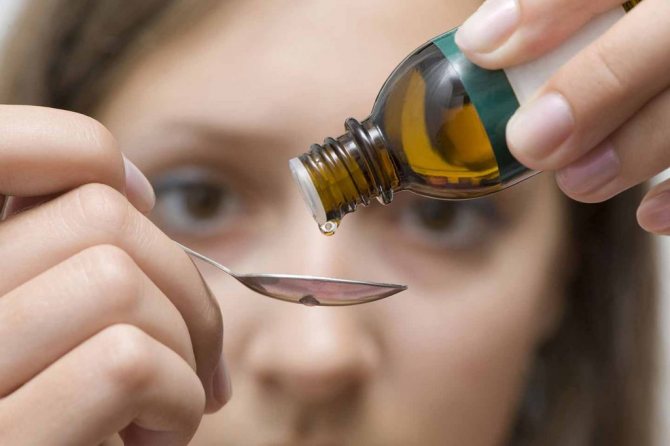
Valerian tincture is recommended as a mild sedative.
Treatment of heart neurosis with folk remedies
In the arsenal of traditional medicine there are hundreds of effective recipes for getting rid of heart neurosis with many very positive reviews.
But, taking into account the individual characteristics of each organism, it is important to understand that the same remedy can affect different people in radically different ways: it will benefit one, and cause irreparable harm to another.
Therefore, before using alternative medicine methods, you should discuss them with your doctor and choose the best ones.
Healing baths before bed will help relieve nervous excitement during the day, calm down, relax and set yourself up for a long and healthy sleep.
Most popular recipes:
- You will need dried and crushed angelica root. A tablespoon of the dry plant should be poured into a container with 3 liters of clean water, put it on the fire, bring to a boil and leave until completely cooled. This bath can be taken for half an hour every other day.
- Rosehip roots are also useful. 100 grams of crushed raw materials must be poured with 2 liters of boiling water and continue to cook the mixture for at least 30 minutes. Next, the liquid needs to be filtered and cooled. You should enjoy the procedure in such a bath for about 40 minutes. Using a similar recipe, you can make a decoction of juniper branches.
- A bath with a collection of medicinal herbs (melissa, oregano, mint, yarrow, pine buds, calamus roots) will help relieve fatigue and restore healthy sleep. You need to take 20 grams of each component, pour the whole mixture into 5 liters of water, boil for 30 minutes, strain and pour into the bath. You can swim in a revitalizing bath for half an hour.
Herbal teas are also useful for neurosis:
- Chop the immortelle inflorescences and dry. Pour two tablespoons of raw material into 250 ml of boiling water, cover the container with a lid and let it brew overnight. In the morning on an empty stomach you should drink the entire glass of the decoction.
- A similar decoction can be prepared from oregano, but you should not drink it immediately, but throughout the day before meals. Do not forget that any preparations with oregano are contraindicated for pregnant women.
- Melissa tea can be brewed and drunk daily 20 minutes after a meal when chilled.
- A decoction of yarrow can be taken a tablespoon before each meal for several weeks.
Treatment of neurosis with pharmaceutical or folk remedies will only help to temporarily get rid of the symptoms of the disease, therefore, without consulting an experienced doctor and a course of psychotherapy, treatment will be ineffective.
How to distinguish tachycardia?
Tachycardia occurs under the influence of external (exogenous) and internal (endogenous) factors.
When influenced by endogenous factors, tachycardia can be a consequence of diseases such as:
- heart defects;
- pathologies of the heart muscle (congenital and acquired);
- dangerous pathologies of the endocrine system;
- excessive bleeding due to injury;
- pulse instability;
- dehydration due to prolonged, continuous vomiting or diarrhea;
- high (febrile) body temperature;
- neuroses and neurosis-like conditions.
As can be seen from the list of causes of VSD, it is not included. The fact is that the diagnosis of VSD itself is not included in the international classification of diseases (ICD 10); it is replaced by a more expanded diagnosis: somatoform dysfunction of the autonomic nervous system. In the post-Soviet space, doctors continue to call the disease vegetative-vascular dystonia (VSD). In Europe, VSD is considered to be a type of neurosis-like condition.
From the list of causes of tachycardia it follows that the disease can occur due to various somatic pathologies. Therefore, if a patient experiencing frequent attacks of tachycardia does not have the developmental anomalies or pathologies listed above, we can assume the somatoform nature of the change in heart rate (tachycardia due to VSD).
In medicine, it is customary to distinguish the following types of tachycardia with VSD:
- Physiological tachycardia (occurs with excitement, falling in love, physical activity, passes gradually and unnoticeably);
- Pathological (due to the factors listed above).
Traditional treatment
When symptoms appear, it is important to decide how to treat cardiac neurosis, although this task is quite complex, since it is difficult to name specific groups of pharmaceuticals.
In any case, the initial direction of therapy is to relieve the patient of psychological discomfort.
In addition, the daily routine, work, and rest are reviewed, nutrition is adjusted, and consultations are held to normalize the situation in the family and at the workplace. As for medications, the determining factor is the patient’s well-being and complaints. Treatment begins with herbal preparations with a mild calming effect - and in this case, traditional medicine comes in handy. Of the pharmaceutical agents aimed at stopping attacks, the following are prescribed :
- Mild antidepressants - Amitriptyline, Azafen and others.
- With the development of tachycardia, β-blockers - Trazicor and the like.
- For sleep disturbances, mild sleeping pills (it should be noted here that such drugs are addictive, so the course should be limited to three weeks of use).
- Physiotherapeutic procedures.
- Use breathing exercises and autogenic exercises.
Complications
Any disease can provoke complications, and tachycardia, which manifests itself against the background of cardiac neurosis, is no exception. Ignoring the problem can result in a general weakening of the body, severe nervous breakdowns, and migraines.
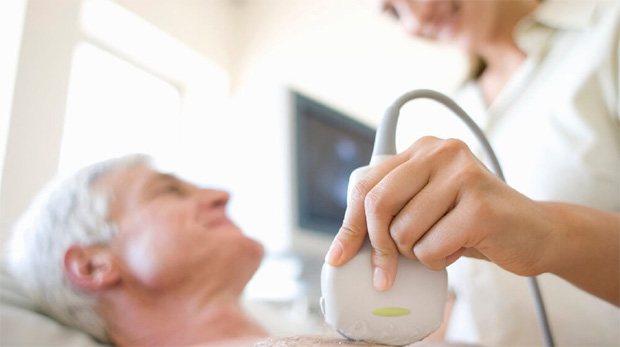
Complications:
- Stroke or heart attack.
- Inability of the heart to pump the required amount of blood.
- Fainting.
Almost any disease has complications and any other undesirable consequences. In our case, complications of tachycardia, which manifests itself against the background of cardiac neurosis, can have a more detrimental effect on the general condition of the body, which is why it is worth thinking about preventing, treating and diagnosing the level of danger to a person’s life (and it happens) as early as possible.
Possible complications include:
- – blood clots leading to a possible stroke or heart attack;
- – inability of the heart to pump enough blood;
- – frequent fainting.
Types of pathologies
From this article you will learn: what cardiac neurosis is, and why experts consider it a neuropsychic, and not a heart disease. Main causes and characteristic symptoms. Is it possible to be cured, and how to do it?
Cardiac neurosis is a functional disorder of the nervous regulation of the heart, not associated with a disorder of the structure or pathology of this organ. In 90% of cases, the disease occurs in people aged 14 to 50 years. Mostly women are affected (75% of patients).
Heart neuroses in terms of symptoms and treatment are not considered dangerous diseases. But they have to be diagnosed by excluding other cardiac pathologies, since there are no reliable methods for diagnosing this particular disease. Symptoms of cardiac neurosis slightly affect the general condition of patients. The main manifestation is pain in the heart area, similar to periodic attacks.
Recovery is difficult, but possible. This requires medications and special psychotherapy sessions. But the most important thing in treatment is the desire of the patient and compliance with all recommendations of specialists. Diagnosis and treatment are carried out by cardiologists, neurologists, psychoneurologists and psychotherapists.
What kind of disease is this
The nervous system regulates the functioning of all body systems (respiratory, cardiovascular, excretory, digestive, etc.). Neurosis is a breakdown in the nervous system - a neuropsychic disorder that leads to disruption of the normal functioning of internal organs.

Click on photo to enlarge
With cardiac neurosis (also called cardioneurosis), the nervous regulation of cardiac activity is disrupted. This means that the disease does not disrupt the structure of the myocardium, valves or blood vessels. No pathological changes occur in the organ. The heart copes with its function of pumping blood.
But its contractile activity is accompanied by periodic pain in the chest, intermittent heartbeat interruptions, weakness and dizziness. All these disorders (attacks) are associated with psycho-emotional instability and experiences (stress, panic, fear, depression, etc.).
Heart neurosis is a distorted perception by the nervous system of impulses that emanate from this organ. The result is the occurrence of unpleasant pain or the formation of incorrect commands in the brain, which only slightly disrupt the normal functioning of the heart. Therefore, cardioneurosis can resemble any cardiac pathology (ischemic disease, arrhythmia, myocarditis).
The heart contracts on its own – automatically. But even this autonomy is only partial. The nervous system, through the autonomic centers and conscious signals from the cerebral cortex, perceives and regulates cardiac activity. Violation of the regulatory relationship between the nervous system and the heart leads to the fact that this organ either begins to work incorrectly, or a person has a feeling that something is wrong with it (pain, interruptions, etc.).
We suggest you read: How to quickly cure tachycardia
The following reasons can trigger the pathological process:
- Severe stressful situations and neuropsychic shocks.
- Congenital instability of the psyche, individual characteristics of a person’s psychotype (irritability, hot temper, tearfulness, despondency, anxiety, depression, tendency to exaggerate) and psycho-emotional lability.
- Diseases of the endocrine system, accompanied by hormonal disorders, as well as periods of hormonal changes in the body (puberty and menopause).
- Overwork of the nervous system (study, mental work, etc.).
- Improper lifestyle – insufficient or excessive physical activity, alcohol abuse and smoking.
- Chronic, long-term diseases that lead to weakening of the body in general and the nervous system in particular.
As a result of exposure to provoking factors, a vicious circle of disease initiation and progression occurs, destroying the correct relationship between the heart and the regulatory centers of the brain.
Typical symptoms
The course of cardiac neurosis can be different - from short-term mild periodic attacks (once every few months or weeks) to constant (daily) occurrence and intensification of symptoms. In any case, the manifestations of the disease are associated with tension in the nervous system - stress, insomnia, anxiety, mental work, etc.
Classic symptoms of cardiac neurosis:
- Pain in the heart area, behind the sternum, in the left half of the chest. They can be represented by mild discomfort, heaviness, squeezing, burning, stabbing and other pains.
- A feeling of trembling or freezing in the chest (slow heart rate). Patients focus on their sensations that the heart seems to be bursting out of the chest or stopping.
- General weakness and impotence.
- Changes in blood pressure.
- Trembling in the body, numbness in the arms and legs.
- Headache and dizziness.
- Heart rhythm disturbances - slight acceleration (tachycardia about 90–100 beats/min), slowdown (about 60 beats/min), extrasystoles (unscheduled contractions and interruptions).
- Dyspnea.
- Feeling of fear, anxiety.
- Anxiety and insomnia.
- Pale or reddened facial skin.
Heart neurosis is a kind of transitional state between normality and pathology. By itself, it rarely disrupts the general condition of patients, but can provoke the occurrence of more severe diseases (atrial fibrillation, angina pectoris and even heart attack, neurotic personality disorder).
Cardiac neurosis can be diagnosed only by excluding other cardiac pathologies. The thing is that with cardioneurosis there are no organic changes that could be detected by:
- ECG;
- Ultrasound of the heart;
- Holter monitoring;
- general and biochemical blood tests;
- chest x-ray.
But this minimum amount of examination must be performed for every person who has symptoms characteristic of cardioneurosis (primarily heart pain). The diagnosis is made if three factors are present:
- During the diagnosis, no pathological changes were revealed at all or they were represented by minimal rhythm disturbances in the form of tachycardia (acceleration), bradycardia (slowdown) or single extrasystoles (interruptions).
- There are no other reasons for the appearance of pain in the heart area (intercostal neuralgia, diseases of the lungs, esophagus and other organs).
- The appearance of symptoms is associated with nervous overstrain.
For help, contact a cardiologist, neurologist, psychoneurologist or psychotherapist.
Features of treatment
The treatment program for cardiac neurosis involves:
- Normalization of lifestyle: exclusion of neuropsychic and mental stress, bad habits and other causative factors of the disease.
- Regular, balanced, vitamin-enriched meals, excluding spicy and any irritating foods, strong coffee, and alcohol.
- Sufficient physical activity - physical therapy, sports games, walks in the fresh air. Both overwork and physical inactivity are excluded.
- Physiotherapeutic treatment: massage, water procedures (best in a sanatorium).
- Sessions of psychotherapy, acupuncture and hypnosis are the most effective methods with which you can not only reduce symptoms, but also cure the disease forever.
- Drug treatment:
- sedatives and sedatives (Valerian, Motherwort, Gidazepam, Adaptol, Phenazepam, Fitosed, Glycised, Eglonil);
- antianginal and diversion drugs (Validol, Corvalol, Corvalment);
- beta blockers (Anaprilin, Metoprolol, Bisoprolol) under the control of blood pressure and pulse;
- multivitamin complexes (Cardiovit, Magne B6, Neurobeks).
Heart neurosis can be cured. To do this, it is necessary to take the utmost responsibility to comply with absolutely all treatment recommendations of specialists. Otherwise, the disease will become progressive, and treatment will bring only temporary relief.
Forecast
It is difficult to predict how cardiac neurosis will end, even with proper treatment. The forecast depends on several factors:
- person's age;
- characteristics of the nervous system and mental status of the patient;
- duration and causes of the disease.
Full recovery occurs in 80–90% of people with minimal psychoneurological disorders aged 15 to 40 years with mild, rare attacks of cardioneurosis.
People over 35 years of age with an unstable psyche or psychotrauma, frequent and severe attacks of the disease, fully recover in 20–30% of cases. About 95% of those who do not recover with treatment report a decrease or temporary disappearance of symptoms.
In only 5% of people, treatment does not bring any effect or neurosis develops into more severe disorders.
Sinus tachycardia with VSD is the most common form of deviation characteristic of patients with VSD (especially in adolescence). Causes palpitations at night. The pulse can reach up to 90 beats per minute.
Paroxysmal tachycardia with VSD (paroxysmal) can begin in any part of the heart, therefore it can be supraventricular (atrial, atrioventricular) and ventricular; in patients with VSD, this type of tachycardia is much less common.
Paroxysmal tachycardia is caused mainly by more serious pathologies in the body than vegetative-vascular dystonia; VSD itself is characterized by sinus tachycardia.
Sinus tachycardia with VSD
In addition to the patient’s descriptions of his condition, the type of tachycardia during VSD can be determined using an electrocardiogram. The ECG result will show an almost unchanged pattern of waves, but the intervals (RR) between heart rhythms will be noticeably shorter, and sometimes the end of the previous and the beginning of a new cycle will even overlap each other. The electrical systole line will also be shorter with tachycardia at the time of VSD. The ST segment falls below the isoline.
How not to miss the first symptoms?
Cardiac neurosis has a broad symptomatic picture, which can be divided into manifestations of cardiovascular, psychological, and other organ systems.
Symptoms of heart neurosis of a psychological nature:
- malaise, weakness;
- constant feeling of fatigue (even after proper rest);
- fast fatiguability;
- irritability, short temper, psychosis;
- tendency to depression and tearfulness;
- anxiety, restlessness;
- panic attacks;
- fear of cardiac arrest;
- absent-mindedness;
- insomnia, sleep disturbance.
During neurosis, the cardiovascular system behaves as follows:
- headaches (constant or paroxysmal);
- dizziness, weakness, loss of consciousness;
- increased sweating;
- sharp, cutting, pulling, squeezing, stabbing pain in the heart, left chest, radiating to the left shoulder blade, forearm or shoulder;
- a feeling of heaviness, squeezing in the area of the heart;
- high blood pressure;
- attacks of fever alternate with chills;
- rapid pulse and heartbeat, arrhythmia, cardiac arrest, feeling of heart beating against the ribs;
- tremor of the limbs, trembling of the internal organs.
Other important organ systems (digestive tract, respiratory organs) also react:
- abdominal pain, bloating;
- nausea, vomiting, belching;
- diarrhea or constipation;
- feeling of a lump in the throat;
- lack of air, suffocation;
- it is difficult to breathe deeply;
- dry obsessive cough.
Neurotic attacks are quite short, lasting about 15 minutes, but for the patient these minutes last forever. A sign of an advanced stage is an increase in the duration of attacks up to an hour and a long recovery period.
At this time, a person really needs external support and help. The patient needs to be calmed down, taken out into the fresh air, unbuttoned the neck of the sweater and allowed to catch his breath.
Feeling a reliable shoulder nearby, he will come to his senses much faster.
The most important sign of cardiac muscle neurosis is that diagnostic measures (ultrasound, ECG) do not reveal objective disorders of the cardiovascular system and physiological abnormalities. Cardioneurosis is a paradoxical condition of the body in which the symptoms of the disease exist and appear quite clearly, but the disease itself is not actually detected.
This once again proves that neurosis has a psychological background and is mostly the result of self-hypnosis. But still, cardiac neurosis is recognized as a disease and needs therapy; later treatment will be difficult and ineffective, while at the initial stage you can quite easily get rid of this disease once and for all.
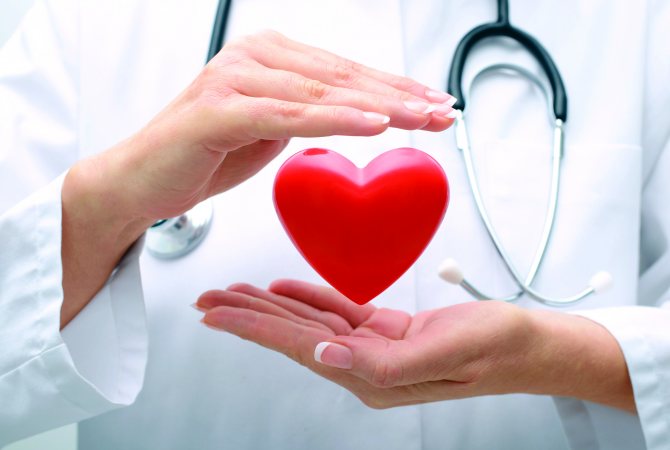
Therefore, doctors recommend contacting a qualified specialist after the first manifestations of symptoms of cardiac neurosis.
Heart neuroses, or functional nervous heart diseases, are a common manifestation of general neurotic conditions. In Anglo-American medicine, this disease is known as “neurocirculatory asthenia.”
Cardiac neurosis develops as a result of disorders of higher nervous activity, especially those occurring with a disturbance of nervous tone, well known as neurasthenia and psychasthenia. The development of cardiac neurosis is also possible during hysterical conditions.
According to the teachings of I.P
Pavlov, people with a weak and unbalanced type of nervous system should be predisposed to these disorders. All kinds of emotional arousal lead to an imbalance between the cerebral cortex and the hypothalamic centers, as well as depletion of nervous processes.
The effect of nerve impulses on the heart is carried out through the autonomic nervous system. Hormonal substances are also actively involved in the development of a neurotic state.
According to Raab, cardiac neurosis is associated with an imbalance between the adrenergic and cholinergic systems, affecting the function of the cardiac branches of the autonomic nervous system. Of particular importance in the development of cardiac neurosis is given to catecholamines, which can not only affect sympathetic innervation, but also be deposited in neuromuscular elements.
Adrenaline, an anxiety hormone that is a catecholamine, increases in the blood during emotional stress that requires resistance and protection (fear, anger, etc.). In almost all cases of cardiac neurosis, it is possible to establish mental trauma or severe nervous tension in the patient’s recent past.
Prevention
Of course, if neurosis and tachycardia have made themselves felt, you should immediately pay attention to this. However, everyone forgets that it is possible to prevent their development altogether. If you are more inclined towards the second path, then it will be useful for you to know what plays a huge role in prevention. It is often given:
- – maintaining a proper daily routine (time is allocated for work, rest and nutrition without compromising any of the above);
- – maintaining a healthy weight (being overweight is known to increase the risk of developing heart disease);
- – special control of blood pressure and cholesterol levels in the blood (you should definitely make lifestyle changes and take medications prescribed by your doctor to correct high blood pressure or high cholesterol levels);
- – giving up bad habits (drinking alcohol, smoking cigarettes). If you smoke and cannot quit on your own, talk to your doctor about this topic;
- – regular physical activity;
- – moderate consumption of coffee and caffeine or its complete exclusion from the diet;
- – stress management (avoid unnecessary stress);
- – the correct and careful use of any medications (for example, some cold and cough medications contain stimulants that can cause heart palpitations);
- – taking morning water procedures and gradual (and then constant) hardening (cold shower/hot shower);
- - walking.
We suggest you read: Nootropics (nootropic drugs): what is this list of the best drugs, which ones are best to take, reviews
Also, do not forget that cardiac neurosis is directly related to the psyche, so it will not be easy for you to achieve the desired results from treatment without positive emotions, good mood and timely solutions to life problems. Chin up! Whatever one may say, this is the first step towards living your life fun and healthy (in every sense of the word)!
Heart neurosis: what kind of disease it is, its signs and treatment – Suppressed
The human psyche is not always able to qualitatively neutralize the effects of stress, and the anxious state becomes pathological - neurosis develops. And since people are more inclined to pay attention to reactions from the heart (palpitations), this condition is called “heart neurosis” or “cardioneurosis,” with an emphasis on the neurotic nature of the pathology.
Cardiac neurosis: symptoms and treatment of cardiac neurosis, what means to treat
- Cardioneurosis is a pathology of the nervous and cardiovascular systems, manifested in disturbances in cardiac activity against the background of severe neurotic disorders , for example, at the moment of hysteria, severe emotional shock.
- Due to the rhythm of life of modern society, this complex disease has become very widespread.
- At least 1/3 of the cardiologist’s patients come with complaints of signs of cardiac neurosis.
- The main cause of the first attack can be any stressful situation , nervous, psychological or physical exhaustion, which results in dissonance between the excitatory mechanisms of the cerebral cortex and the inhibitory ones.
- The further development of cardiovascular neurosis is actively promoted by:
- unhealthy lifestyle (lack of proper nutrition, adequate sleep, sufficient physical activity);
- strong mental experiences (permanent or acute episodic);
- excessive concentration on one thing for a long time (responsible work, study);
- psychological fatigue (quarrels in the family, strained relationships in the team);
- bad habits (smoking, drinking alcohol, drinking too much coffee);
- infectious, colds and other chronic diseases;
- vegetative-vascular dystonia;
- traumatic brain injuries;
- disruption of the endocrine system (deficiency or lack of hormones);
- predisposition at the genetic level (heredity).
Source: https://glpni.ru/lekapctva/nevroz-serdtsa-chto-eto-za-bolezn-ee-priznaki-i-lechenie.html
How to get rid of the disease 7 ways
Everyone who is familiar with the diagnosis of vegetative-vascular dystonia knows the concept of tachycardia. Why tachycardia occurs during VSD should be examined in more detail.
Need to know! The very concept of “tachycardia,” translated from medical language, means “rapid heartbeat.” Normally, in a middle-aged adult at rest, the number of heart beats per minute should correspond to an average of 72 beats. These parameters differ slightly between women and men (from 65 to 90 and from 60 to 80, respectively).
In children under 2 years of age and elderly people, heart rate is increased to 100-140 beats per minute. This means that if a thirty-five-year-old woman sitting quietly in front of the TV has a pulse exceeding 90 beats per minute, we can detect an attack of tachycardia during VSD.
It is completely impossible to recover from tachycardia with VSD. In order for the tachycardia caused by VSD to disappear, the disease of vascular dystonia itself must be cured. There is a separate article on how to treat VSD, so it is worth considering ways to eliminate pulse instability in the presence of VSD.
You can stop an attack of tachycardia during VSD (with a heart rate of more than 160 beats per minute) by observing the following measures:
- Take a reclining position to ensure a state of rest;
- Release your neck and chest if you have tight underwear (open your shirt collar, loosen your tie, unfasten your bra);
- Rinse your face with cold water, place a damp, cool cloth or towel on your forehead;
- Try to cough or induce vomiting (if an attack of tachycardia during VSD is accompanied by nausea);
- Provide fresh air access to the room and use classical breathing techniques. For five minutes, inhale deeply and exhale quickly;
- Take from 15 to 30 drops of Corvalol, Valoserdin or Valerian tincture;
- If an attack of tachycardia during VSD caused a violent emotional outburst, accompanied by an increased release of adrenaline into the blood, beta-blockers will help calm the heart. The simplest and most accessible among them is “Anaprilin” at the time of tachycardia during VSD. Taking one tablet under the tongue blocks the release of adrenaline, slightly lowers blood pressure, and reduces heart rate. The effect of “anaprilin” is symptomatic and short-term. Taking it as a therapeutic agent at the time of tachycardia with VSD does not make sense. Another important note: if two sublingual Anaprilin tablets did not have the desired effect, ten will not help, and an overdose will lead to serious complications.
If, 10 minutes after the onset of an attack of tachycardia during VSD, at the time of applying the above measures, the heart rate does not fall below 150 beats per minute, you should urgently call an ambulance. Since the development of complications such as myocardial infarction, stroke, and clinical death is possible.
Tachycardia with VSD manifests itself constantly. The pulse rate at rest may be 30 beats per minute higher than normal. Sometimes a person does not even feel this state, because he is used to it. Such tachycardia with VSD leads to serious problems in the functioning of the heart and to dangerous disorders.
To avoid the development of negative consequences of tachycardia during VSD, you should undergo a thorough examination of the body. The cause of chronic tachycardia may not be VSD at all, but more serious health problems.
Heart neurosis: symptoms and treatment, development mechanism, treatment options
The human psyche is not always able to qualitatively neutralize the effects of stress, and the anxious state becomes pathological - neurosis develops. And since people are more inclined to pay attention to reactions from the heart (palpitations), this condition is called “heart neurosis” or “cardioneurosis,” with an emphasis on the neurotic nature of the pathology.
What is cardiac neurosis
It is human nature to experience physiological fear under certain circumstances. Emotional overexcitation is accompanied by manifestations from the autonomic nervous system - the heart beats wildly, the pulse quickens, the face and body become covered in cold sweat, the pressure rises or falls.
This is a normal reaction of the body to a stressful situation, which goes away when the person calms down.
In the case of cardiac neurosis, normalization of the psyche does not occur, and the person “hangs” in a neurotic state, from which it is quite difficult to get out without outside help (clinical psychologists and psychotherapists work with neuroses).
A characteristic feature of cardioneurosis is the absence of organic damage to the heart and functional disorders. There are no justifications visible on the ECG for those experiences that force patients with cardiac neurosis to consult doctors who are specialists in the treatment of heart diseases.
This raises a number of problems, since the neurotic person experiences suffering and worries about the health of his heart, and cardiologists claim that there are no medical indications for treatment.
This situation further intensifies neurosis (anxiety), which provokes an increase in pressure “due to nervousness” and the occurrence of a strong heartbeat.
Useful information Cardioneurosis is also aggravated by the fear of death, the fear of dying from sudden cardiac arrest (heart attack), for example, in a dream - hence the process of falling asleep worsens, sleep and general well-being are disturbed. Due to panic thoughts, it becomes difficult for the patient to correctly assess his condition.
Heart neurosis - the symptoms and treatment of this pathology directly depend on whether a person is ready to deal with this problem and adequately respond to the help of specialists.
How does the heart hurt with cardioneurosis?
Patients with cardiac neurosis describe the attack as:
- a feeling of squeezing, squeezing, or bursting in the area of the heart;
- lump in the throat;
- burning in the chest area;
- feeling of a sinking heart.
Characteristics of cardialgia (heart pain) in cardioneurosis:
- the pain is aching, throbbing, pressing;
- radiates to the left shoulder blade, neck and spine.
A distinctive feature: patients with cardiac neurosis tend to describe pain differently, depending on their psycho-emotional state. What remains constant is anxiety, concern about the next attack, that is, the neurotic manifestations of this pathology.
Characteristic symptoms
Heart neurosis manifests itself as anxiety and fear.
Signs of anxiety:
- excessive irritability, tension;
- pathological tachycardia (increased heartbeat not caused by physical activity or natural physiological fear);
- trembling in the limbs;
- panicky thoughts;
- dizziness;
- hard breath;
- headache;
- increased sweating;
- stiffness in movements, muscle spasms.
Neurotic anxiety in cardioneurosis differs from the normal state of anxiety - a useful mechanism of adaptation and protective behavior.
During an attack of cardiac neurosis:
- shortness of breath, suffocation appears;
- there is pain and discomfort in the heart;
- fear of sudden cardiac arrest intensifies.
The duration of the attack is from a minute to half an hour. The patient may be in a faint state. The feeling of anxiety persists for an hour or more. In severe cases, attacks occur daily.
It is necessary to distinguish cardiac neurosis from cardiac pathologies. With cardioneurosis, psychogenic cardialgia is observed, in which:
- patients tend to describe their symptoms very emotionally, are fussy, actively gesticulate and move;
- there is no clear definition of pain;
- characterized by panicky, somewhat inappropriate behavior;
- there is indiscriminateness in taking medications, a desire to take many different medications;
- Taking Nitroglycerin does not affect the attack.
During an attack of true cardialgia (with angina pectoris and myocardial infarction):
- patients try to lie down or sit down and move less, because movements increase pain;
- the description of pain is clear and restrained;
- Nitroglycerin reduces pain.
The behavior of patients with cardioneurosis differs significantly from the behavior of people with heart disease.
Causes
At the heart of heart neurosis is a mechanism that triggers panic attacks. The panic here is due to the fear of death from a heart attack. Moreover, the patient may not know exactly how myocardial infarction manifests itself.
Any heart pain, even minor, is associated in the patient with this severe cardiac pathology.
In this case, the normal physiological increase in heart rate during excitement or physical exertion is perceived as a threat to life and provokes the emergence of pathological fear of sudden cardiac arrest.
Fear significantly changes hormonal levels, promotes a powerful release of adrenaline, which in turn provokes an even faster heartbeat.
A cycle of fear and heart palpitations arises: uncontrollable pathological fear triggers a strong heartbeat, which in turn causes panic fear. The more the patient fears for his heart, the harder it begins to beat.
At the same time, there is no real threat that could justify fear for the heart, but the psyche of a patient with neurosis perceives the far-fetched threat as real. This is the difference between a healthy psyche and a neurotic one.
Useful information Heart neurosis is the result of a patient’s neurotic conviction that he is suffering from a heart disease, which at the same time exists only in his consciousness.
A person begins to fear not for his heart, but for himself, that is, cardiophobia develops (fear of his own heart).
The problem also lies in the fact that just one attack of cardioneurosis is enough for fear and dread of a new attack to take hold in the patient’s mind. This panic fear is the trigger for the attack.
Predisposing factors:
- excessive mental and physical stress;
- regular disruption of the physiological regime of sleep and wakefulness;
- poor nutrition;
- chronic diseases;
- intoxication of the body after a severe infectious disease or poisoning;
- chronic stress;
- hormonal disorders;
- pregnancy.
Cardiac neurosis is a psychosomatic disorder - a pathology in which attention should be paid to the mental state of the patient.
How to confirm the diagnosis
Diagnosis of cardioneurosis:
- ECG;
- Holter monitoring (daily or more ECG registration);
- bicycle ergometry;
- Ultrasound of the heart.
The diagnosis of “cardiac neurosis” is made in the absence of organic changes and functional disorders in the heart area, based on characteristic, recurring symptoms.
How to treat heart neurosis
Effective treatment requires a comprehensive approach, great commitment from the doctor and/or clinical psychologist, as well as the conscious participation of the patient.
It is better to cope with cardiophobia using psychotherapeutic methods. If necessary, medications (tranquilizers, sleeping pills, antidepressants, drugs that normalize blood pressure) are used in the treatment of cardiac neurosis.
You can quickly relieve emotional stress by taking 5-10 Glycine tablets (under the tongue, until completely absorbed). If it was not possible to neutralize stress in time, then you should drink Valocordin (15–30 drops).
To maintain emotional balance, take extract in tablets and motherwort tincture (suitable for long-term therapy).
It is recommended to take medications under medical supervision, especially for prescription drugs.
What to do during an attack
If an attack occurs, it is recommended:
- provide the patient with access to fresh air;
- measure blood pressure;
- give the patient Valocordin, Motherwort tincture, Novo-Passit, Glycine (under the tongue).
If possible, try to distract the patient and divert his attention from the heart.
Psychotherapy
It is possible to completely cure heart neurosis if you understand the causes of anxiety and neurotic fear. But this is the main problem - it is difficult for a neurotic person to adequately assess his condition, that is, to accept the fact that it is not the heart that needs to be treated, but the neurosis. The treatment of cardioneurosis requires the help of psychotherapists and clinical psychologists.
At the initial stage of psychotherapy, it is difficult for the patient to switch attention from the heart.
An attack of cardiac neurosis occurs suddenly, and this suddenness practically paralyzes the patient’s psyche, making him incapable of conscious control over his thoughts and actions.
Switching attention should be trained in a calm state and only after the patient has realized the importance of this method and its key role in curing cardiac neurosis.
Effective therapy is impossible without the patient's awareness of the basic mechanisms of his neurotic manifestations.
Folk remedies
A good therapeutic effect for heart neurosis is provided by the use of soothing medicinal plants with cardiovascular effects. The most effective for cardiac neurosis are Adonis vernacular (Adonis) and Leonurus cordis. Hawthorn is used to strengthen the heart muscle.
Mixture of medicinal plants:
- motherwort;
- spring Adonis (adonis);
- crushed valerian rhizomes;
- hop cones;
- mint/melissa.
Mix all ingredients in equal proportions and leave in a thermos. Dosage - 2–4 tbsp. l. mixtures per 1 liter. Take 0.5 cups 2-3 times a day between meals. You can sweeten if necessary. The infusion is good for 2 days.
The effect of herbal medicine does not occur immediately. It is recommended to take the medicinal infusion for at least 2 weeks.
Complications
The danger of cardioneurosis lies in the possible development of cardiac pathologies. With an unfavorable prognosis, cardiac neurosis provokes the occurrence of hypertension, angina pectoris, and coronary artery disease.
Chronic neurosis can cause organic and functional damage not only to the heart, but also to blood vessels, which leads to the occurrence of vascular diseases, which in turn will lead to pathologies of internal organs, skin and joints (that is, “all diseases from the nerves”).
Forecast
Going to doctors and taking pills are ineffective in terms of complete recovery if a person cannot understand what is happening to him and is not ready to take the necessary control over his mood and emotions.
The issue of control over emotions must be approached gradually and carefully, since there is a risk of another fear arising from the fact that you will not be able to curb your emotional sphere.
If patients prefer constant drug therapy (“sitting on pills”), then the possible harm from using medications should be taken into account. This is especially true for taking sleeping pills, tranquilizers and antidepressants.
With effective treatment of cardiac neurosis, which includes not only supportive therapy, but also elimination of the cause of the neurosis with the active participation of the patient himself, a complete recovery is possible.
Prevention
Prevention of cardiac neurosis includes, first of all, methods of anti-stress self-defense and stabilization of the emotional state.
Help to restore peace of mind:
- Nice memories;
- The favorite music;
- constructive communication;
- walk outdoors;
- moderate physical activity (without competition and strong emotional involvement);
- games with pets;
- trips.
Engaging in your favorite hobby improves your mood and distracts you from painful experiences.
Nutrition for the prevention of cardiovascular diseases
In the prevention of cardiovascular neurosis, proper nutrition is important, with the exclusion or reduction of consumption of foods harmful to the health of blood vessels, such as:
- fat meat;
- cakes, creams, flour products (with a large amount of confectionery fat);
- margarine;
- refined deodorized vegetable oils.
Animal products (meat, fatty cottage cheese, butter) contain cholesterol. When consuming large amounts of these foods, cholesterol accumulates in blood vessels, forming cholesterol plaques, which leads to atherosclerosis and hypertension.
Refined deodorized vegetable oils and margarine contain harmful trans fats.
Source: https://nervy-expert.ru/neurology/nevroz/nevroz-serdca-simptomy-i-lecheniye/
Urgent Care
During treatment or remission, heart attacks may occur. Although they do not pose a threat to life, they cannot be ignored. First aid recommendations:
- Lay the patient down and provide air access.
- Measure blood pressure and pulse.
- Distract with conversation on neutral or interesting topics.
- Offer a mild sedative: valerian, motherwort, Corvalol.
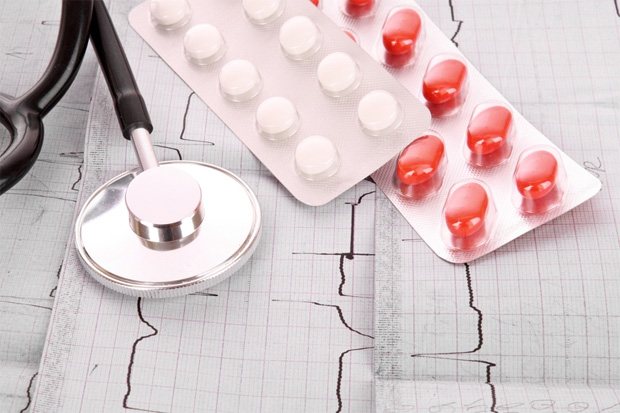
If the pulse rate increases, dizziness occurs, you need to call an ambulance.
If the patient feels unwell and the pulse begins to go off scale, then you need to immediately call an ambulance. Before her arrival, it is important to ventilate the room and take a comfortable position (lying down or sitting down). You can cough or try to artificially induce vomiting. If this doesn't help, you can wash your face with cold water. For medications, you can take valerian, Corvalol or any sedative. This will help you relax, lower blood pressure and normalize your pulse.
Paroxysmal tachycardia requires the administration of lidocaine. Until this is done, you can strain your abs, press in your eyeballs, and hold your breath. If nothing helps, then it makes sense to carry out reducing electrical stimulation. This can save the patient's life. Otherwise, this condition can lead to extensive myocardial infarction.
General information
It is still not completely known what leads to cardiac neurosis. The following reasons are identified:
- asthenic appearance of the nervous system;
- VSD;
- increased blood pressure;
- problems with hormones;
- chronic heart and kidney diseases;
- psychological stress.
Emotional unrest provokes a rapid heartbeat.
The manifestations of the disease are different for everyone. Symptoms depend on the person's emotional state and level of fatigue. The person feels a headache and pain in the heart (as if the chest is being squeezed), nausea, lack of oxygen and suffocation. The patient feels weak and his legs cannot support him. It's hard to talk and think. A person has a rapid heartbeat. He feels fear.
Tags: neurosis, dangerous, tachycardia
About the author: admin4ik
« Previous entry
Symptoms
Doctors often find it difficult to distinguish cardialgia of nervous disorders from angina pectoris. A characteristic sign of the first case is the behavior of people; with severe heart pain, patients try to move less so as not to aggravate it. And with cardioneurosis, the pain does not hamper movement, the person is able to walk, run and gesticulate briskly. Usually, such patients are brought to the doctor by increased heartbeat. In this case, the pulse rate is not high and not constant, but the number of beats can either decrease or increase.
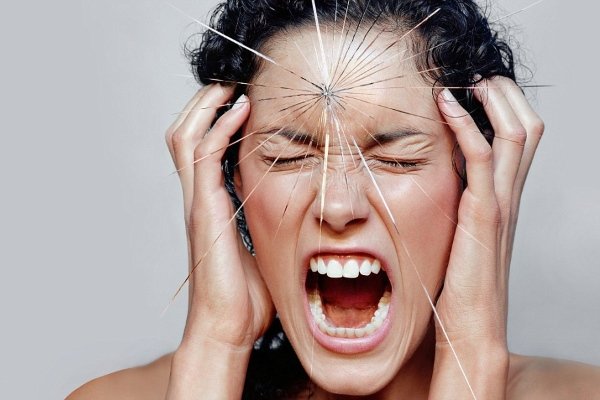
Symptoms of cardiac tachycardia:
- Feeling of heat in the body.
- The skin becomes pale or very red.
- Hands and feet get cold.
- Body temperature rises.
Symptoms of tachycardia in neurosis:
- Heart pain can last from a few minutes to a couple of months. It radiates under the shoulder blade or into the neck area.
- The symptom disappears if the patient begins to move.
- Fear of death and anxiety arise.
- Panic attacks. The pulse becomes very rapid.
- Heavy loads.
- Dyspnea.
- Vegetovascular dystonia.
- Dizziness.
